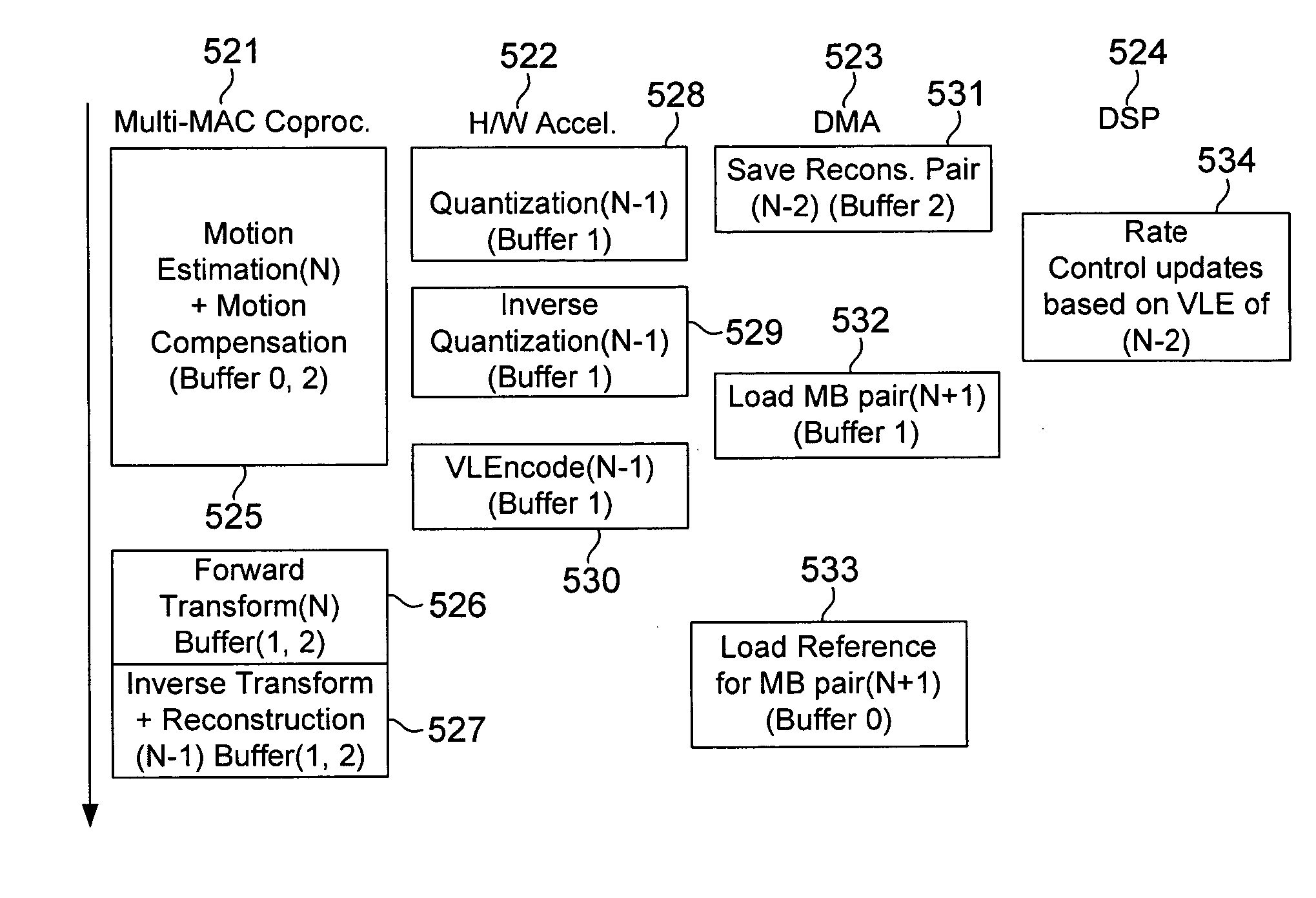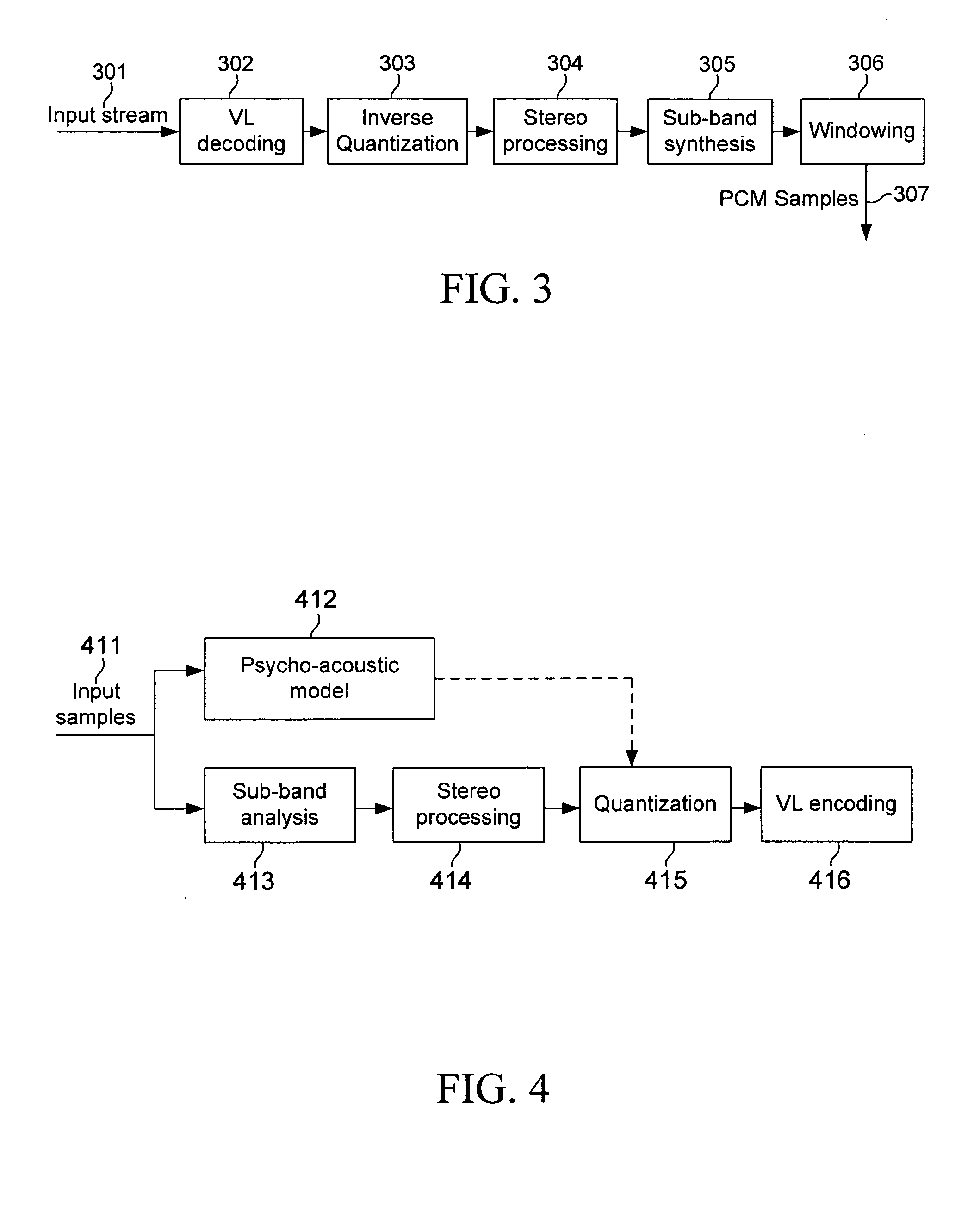Multi-threaded processing design in architecture with multiple co-processors
a technology of multi-threaded processing and co-processors, applied in image data processing, program control, image data processing details, etc., to achieve the effect of reducing redundancy, efficient use of available resources, and reducing idle time for key processors
- Summary
- Abstract
- Description
- Claims
- Application Information
AI Technical Summary
Benefits of technology
Problems solved by technology
Method used
Image
Examples
Embodiment Construction
[0021] The description that follows provides a detailed exemplary approach for designing a multi-thread processing operation in an architecture that uses multiple processors and / or hardware accelerators with a view to obtaining improved throughput from the process without foregoing the process requirements and predetermined constraints. Even though the inventive approach is applicable to any general situation wherein multiple processors are used, the embodiments described herein below are directed by way of example and not limitation, to a processing operation involving multimedia processing including video and audio processing.
[0022]FIG. 1 illustrates a block diagram of a typical video decoder including an entropy decoder block 101 that receives bits. Processing continues with inverse quantization in block 102, inverse transform in block 103, and motion compensation in block 104. Outputs from blocks 103 and 104 go to the adder at 109 and decoded frames 108 are put out. Decoded fra...
PUM
 Login to View More
Login to View More Abstract
Description
Claims
Application Information
 Login to View More
Login to View More - R&D
- Intellectual Property
- Life Sciences
- Materials
- Tech Scout
- Unparalleled Data Quality
- Higher Quality Content
- 60% Fewer Hallucinations
Browse by: Latest US Patents, China's latest patents, Technical Efficacy Thesaurus, Application Domain, Technology Topic, Popular Technical Reports.
© 2025 PatSnap. All rights reserved.Legal|Privacy policy|Modern Slavery Act Transparency Statement|Sitemap|About US| Contact US: help@patsnap.com



